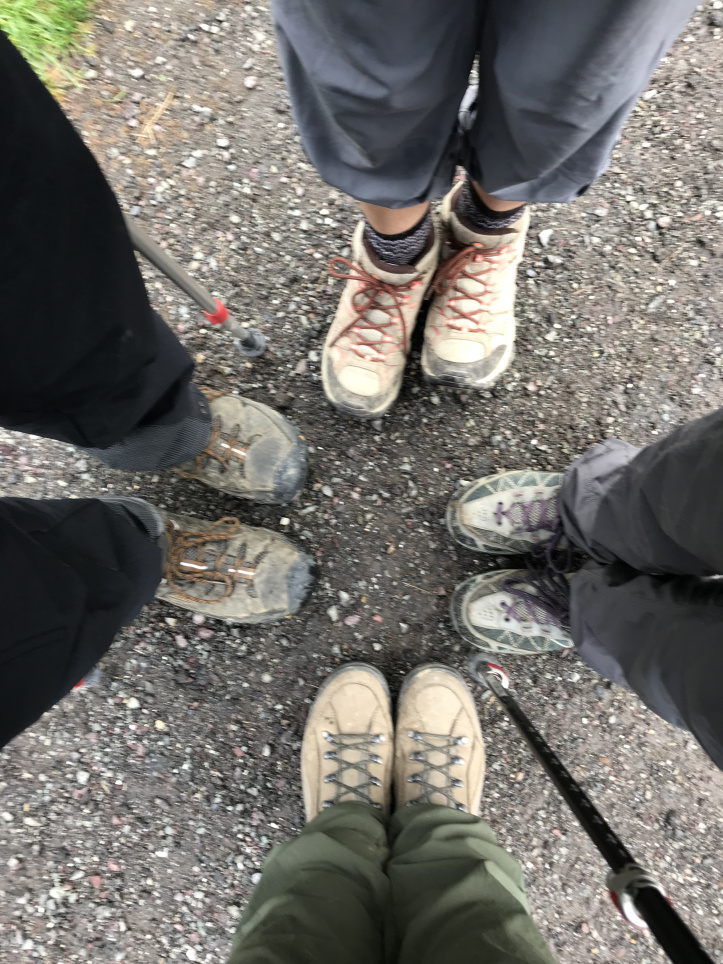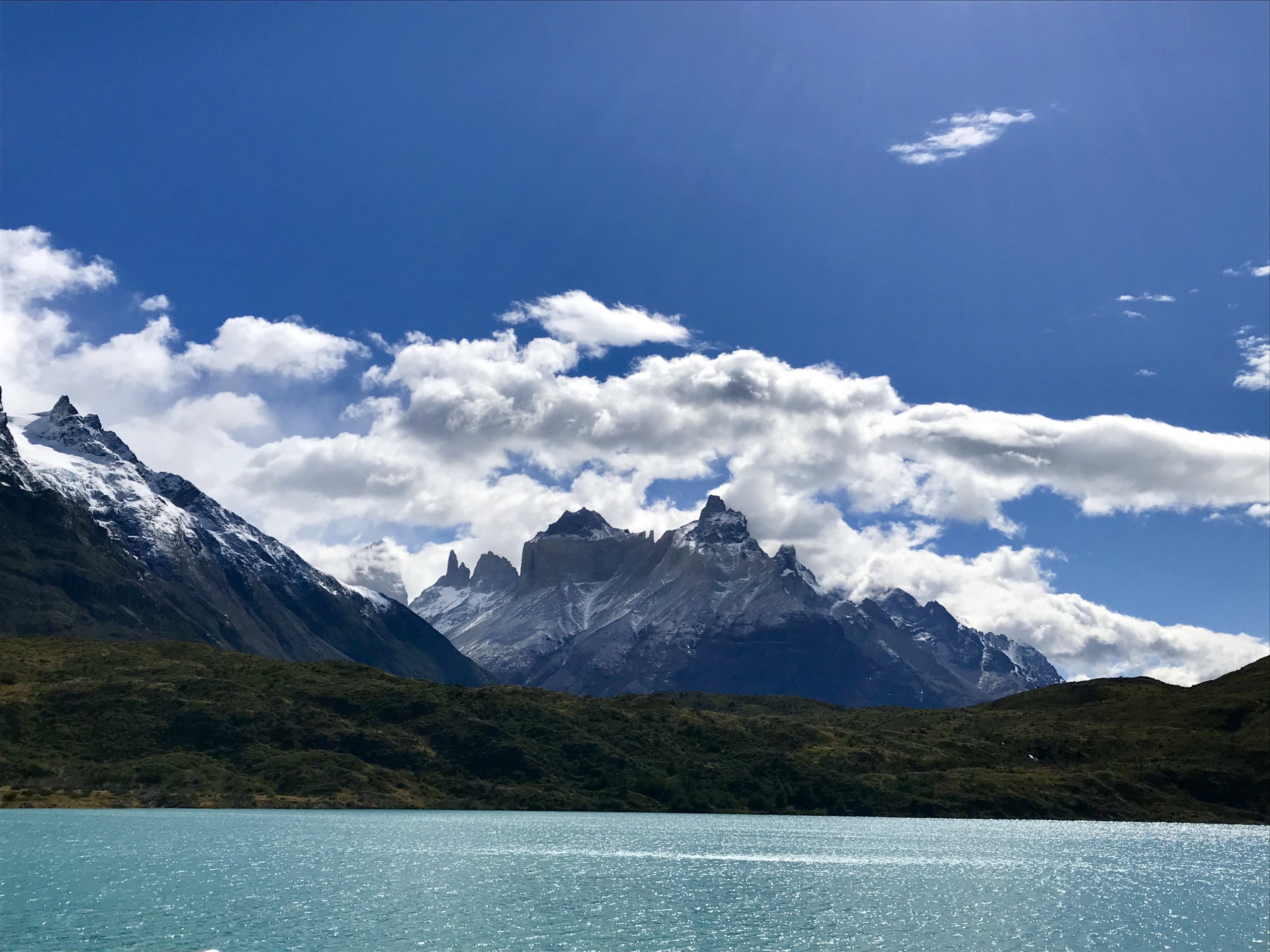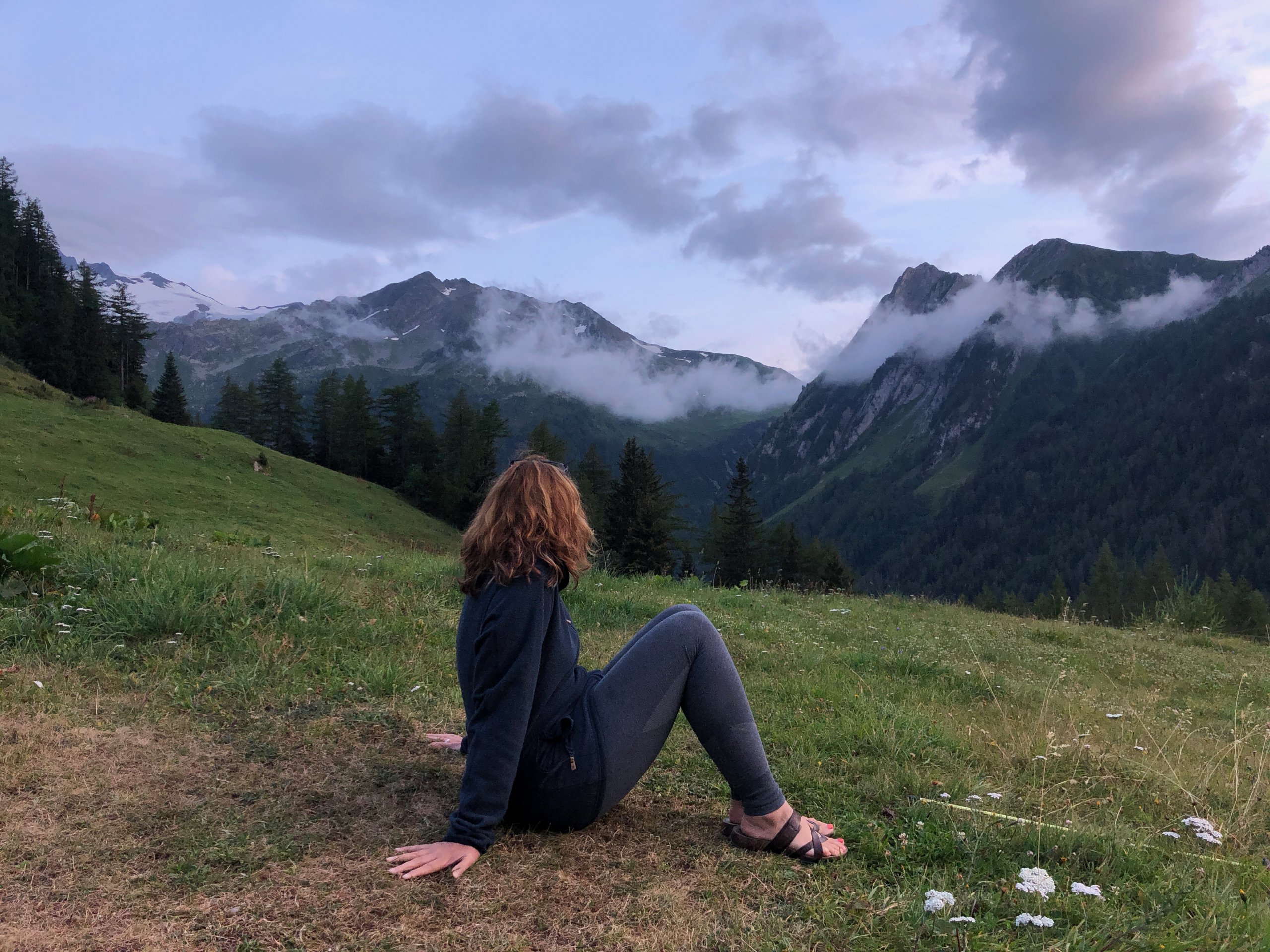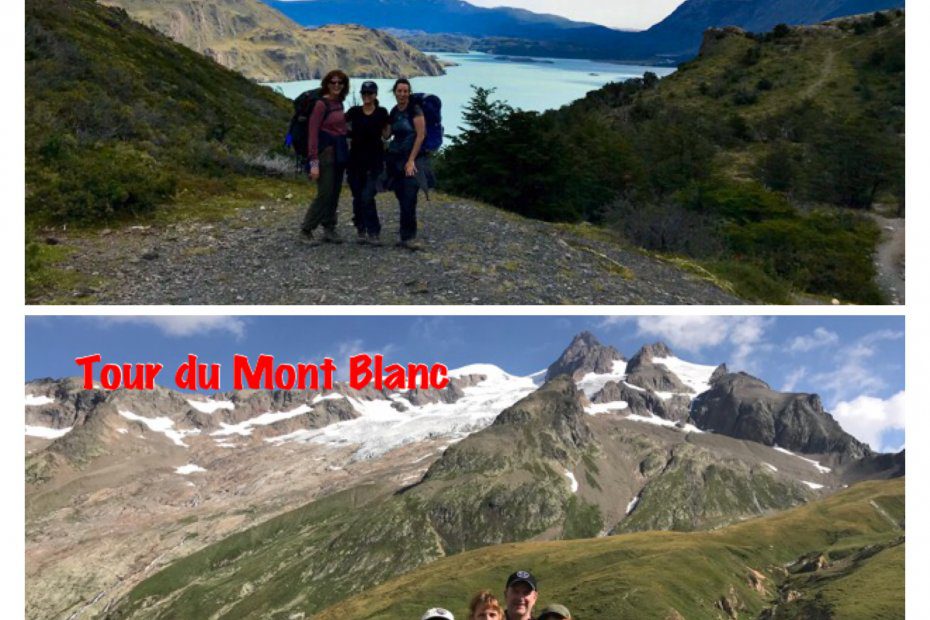
The year I turned 50, in 2018, I did a lot of long distance hiking to prove to myself that I was not getting old. I started the year trekking in Patagonia, Chile and finished the year in Europe, in the Alps. It was an amazing year and broadened my love of travel to include parts of the world I was never before interested in seeing. I now look for my vacations to include a bit of off roading adventure. Here is a comparison of two of the worlds best trekking experiences – The Torres del Paine in Patagonia, Chile and the Tour Du Mont Blanc in the Alps in Europe.
Torres del Paine, Patagonia, Chile
In February, during NYC’s winter, I flew with 3 friends to the southern most point of Chile, and hiked for 5 days in Patagonia during what was their summer. We were headed for the Torres del Paine W Trek. This was my first long distance hiking trip so I spent months training for this adventure, including running the stairs in Fort Greene Park, Brooklyn.
We 4 friends planned the Torres del Paine W trek with the assistance of a company called Chile Tour Patagonia . The hike was 5 days and we covered about 50 miles in total. Chile Tour Patagonia arranged for our refugios (hiking hostels) during the hike and the refugios fed us our meals and provided bedding. All we had to carry was our clothing for the week. Our backpacks weighed between 30 and 40 lbs. While we worked with a guide to arrange our accommodations, once we set off on the hike, we were totally on our own. We had the length of one day to get from one refugio to the next. Each of the refugios were expecting us, so if we didn’t show, we hoped they would at least come looking for us.

The Tour du Mont Blanc, Alps, Europe
Later that year, during the heat of our summer, myself, my husband and my two teenage girls flew to Chamonix, France and set off to hike the Tour Du Mont Blanc. We used a tour guide for this trip as well.
Compagnie des Guides de Chamonix accompanied us on the entire trip and even had a truck that picked up our big backpacks every morning and delivered them to the next destination by our arrival that evening. We each carried day bags that weighed less than 10 lbs.
During this trip we covered 65 miles over six days and crossed the border of 3 countries – Switzerland, Italy and France. It was just about the same amount of miles per day as the Patagonia trip. Even though we had our teens with us, this didn’t slow us down. We all trained a little bit for this trip, but not as extensively as I trained for Patagonia.

Each trip was amazing and I feel so lucky to have experienced them. They have inspired me (and my family) to seek out other hiking adventures as much as possible. Comment below and tell us about your favorite hikes so we can add them to our list! A comparison of trekking Patagonia vs. the Alps might help you to decide your next trip.
The Terrain
Terrain: Both the Alps and Patagonia are well traveled regions with well marked trails. Neither region requires significant altitude adjustment – on the W trek the highest elevation is about 9,000 feet and on the Tour Du Mont Blanc, the highest elevation is about 8,000 feet. The most notable difference between the two trips is that in Chile, once you begin the trek, your only way out is through. There are no roads, so either you are going back to the beginning or continuing through to the end. In the Alps, there are plenty of roads, allowing for short cuts or alternate routes and you are never too far from a town with lots of amenities.


It’s difficult to compare the terrain on an absolute level because conditions and circumstances were different. First, I was in better physical shape for Patagonia (Torres del Paine) than I was for the Alps (Tour du Mont Blanc).
Second, in Patagonia I was carrying a 35lb backpack and in the Alps, my pack was less than 10lbs. However, I observed that while the ascents were equally hard for both hikes, the descents in the Alps were longer and steeper than in Patagonia. This can be hard on the knees. I didn’t really need my poles on the Torres del Paine trek but I really wished I had them on the Tour Du Mont Blanc. The views are breathtakingly beautiful on both hikes. In Patagonia, you will see more glaciers and glacier lakes (photo on right below), while in the Alps, it’s more of a rolling mountain with cows wearing cowbells type of experience (photo on left below).


The Weather
Weather: Both areas have their weather related challenges. Patagonia is known for its notoriously strong winds. The dry polar winds come in from the west very suddenly and are occasionally strong enough to knock you down. We experienced one incident of frighteningly strong winds which lasted about 4-5 minutes. Crouching down low and plastering ourselves against the mountain face felt like the only safe approach. As we did this trip during Chile’s summer months, for us the weather was a perfect 65-75 degrees during the day. This unusual warmth was causing trail damaging flooding from melting icebergs which creates additional challenges for hikers. We also experienced extreme summer heat during our hike in the Alps. The warm weather was responsible for more than one avalanche (off in the distance) during our hike, as well as falling rock that resulted in the closing of trails and rerouting of our hike.
Where to Sleep
Accommodations: As I mentioned earlier, the biggest difference between the two hikes is the accessibility once you begin the hike. As I mentioned earlier in the Torres del Paine trek, there is no way out except for through. You have plenty of options for accommodations along the way ranging from hotels, to refugios (similar to a hostel), and campsites (both paid and free) – but no towns or opportunity for commerce. If you need Advil or a Band Aid – you better have packed it.
We stayed one night in a hotel, 3 nights in refugios, and one night on a paid campsite (as luck would have it, the only rainy night!). The paid campsite included a raised tent and bedding as well as the benefit of the food from the nearby refugio. All of the options are friendly, family run spots where food is available – mostly cafeteria style – and beds and bedding are provided. In the refugios, bathrooms are shared, lights and electricity get turned off at 10pm and beds are mostly bunk beds with several to a room.
The Tour Du Mont Blanc is structured differently. At least once every day or day and a half, you come across a full service town. Many people choose to spend a rest day in the beautiful town of Courmayeur. Options for sleeping along the route include B&B’s, Refuges, beautiful chalets and camping. Rooms in refuges can be dorm style or private rooms. Since we traveled with kids on this trip, we opted for private rooms. The general quality of accommodations in the Alps was much higher (which does not necessarily mean better).
If you are looking for a more authentic “roughing it” experience – Chile is the better option. If you want to be a bit pampered after a long day of hiking, the Alps is the place to go. In both cases, advance booking is highly recommended.


General Services
Services: While Italy and France use the Euro, Switzerland uses the Swiss Franc. While you are on the Tour Du Mont Blanc, most places will accept Euros or credit cards. There are still some places in the mountains that only accept cash so carry some Euros with you.
In Patagonia, the currency is the Chilean peso. There are no ATM’s in Torres del Paine and internet service is spotty so carry cash. Speaking of internet service – on the Tour Du Mont Blanc, we found we could generally access our international plan once we got to the refuge at night. There is little to no service during the day. In Chile, we had very limited access to service. I had the ability to let my family know I was alive once during the trek, but the rest of the trip we were without reliable connections.
The Food
Food: After a full day of hiking, you are hungry and will eat just about anything. Here, you have to decide if you want gourmet food or sustenance. In Chile, we had plentiful amounts of sustenance after our long hiking days in a cafeteria style atmosphere and family style tables. In the Alps, we were fed really well – also in family style tables but generally with much more care and attention to the quality of the food.
I hope this summary helps you to decide which trip is right for you. Both were life changing experiences for me – neither was better than the other but they were both different. Let me know in the comments if you agree with my assessments.
Want to read more about our trips to Torres del Paine, Patagonia and Tour Du Mont Blanc, Alps? See the following posts:
